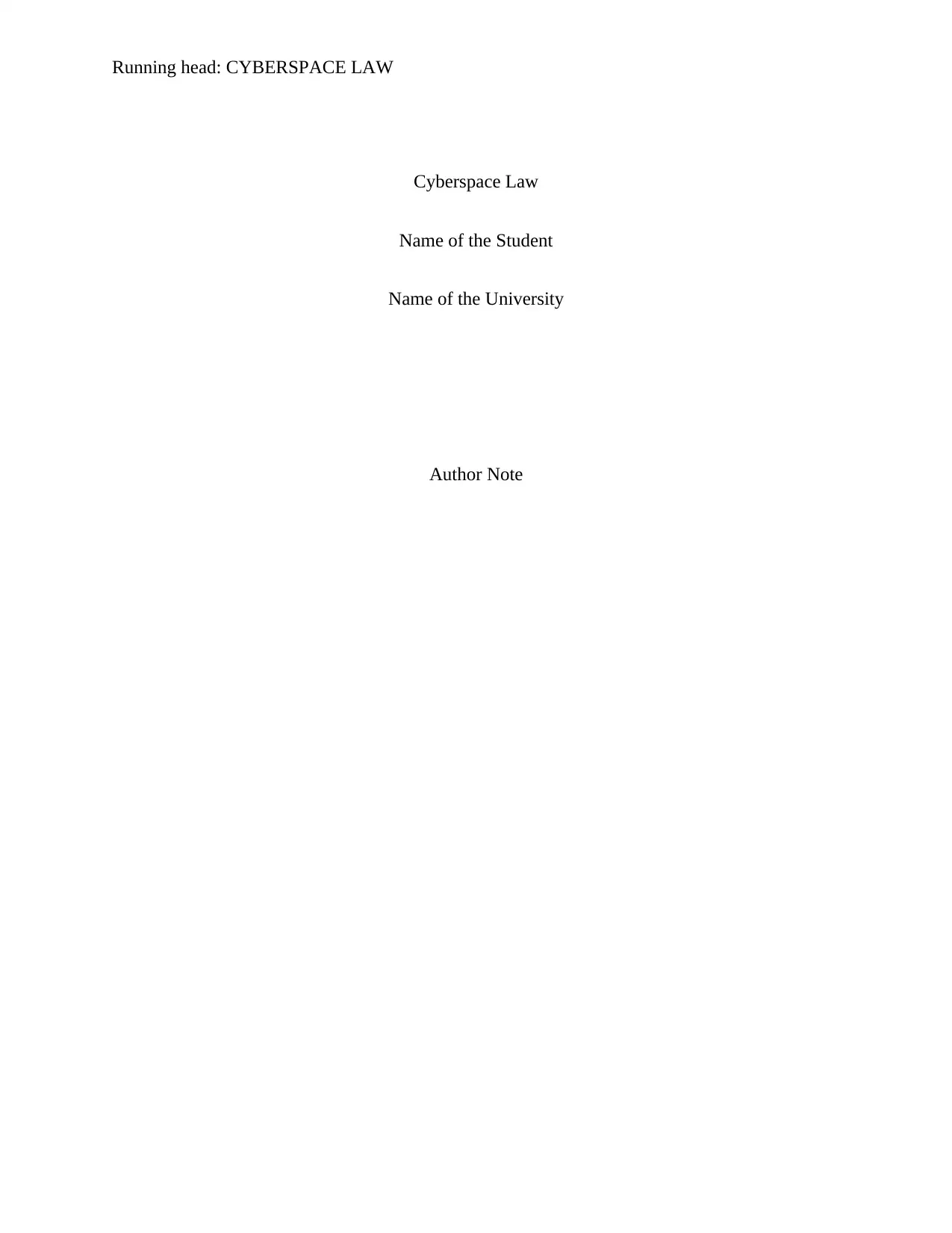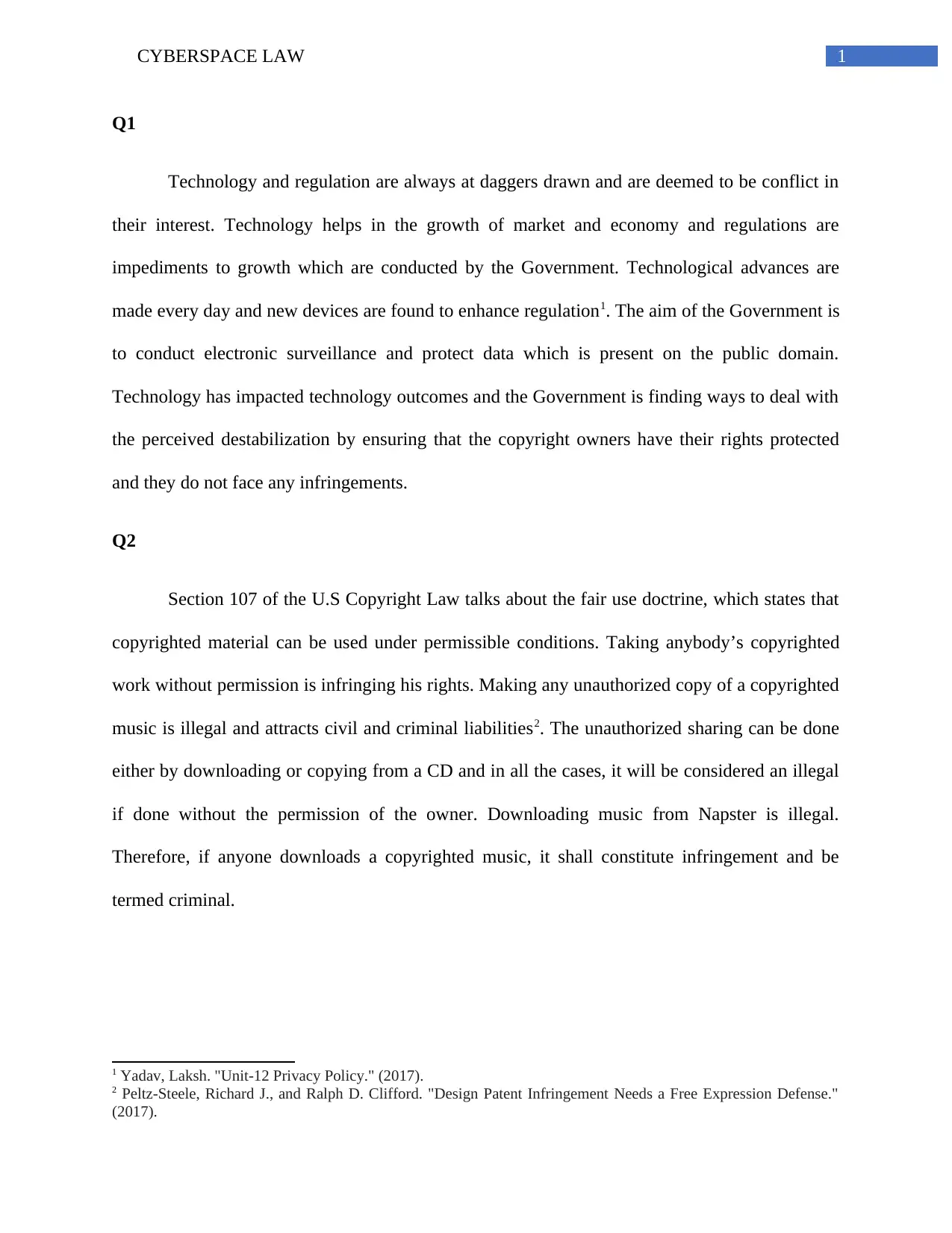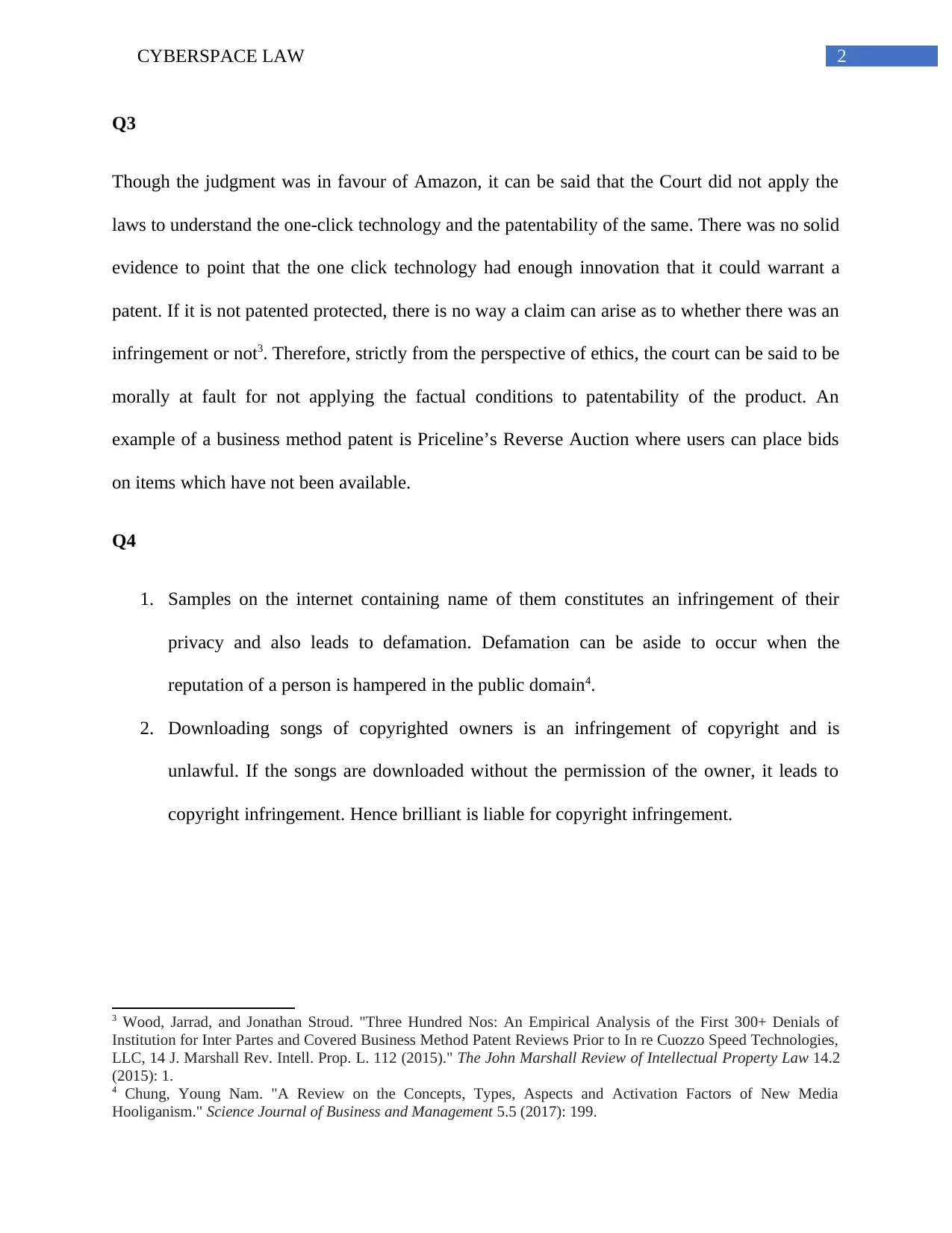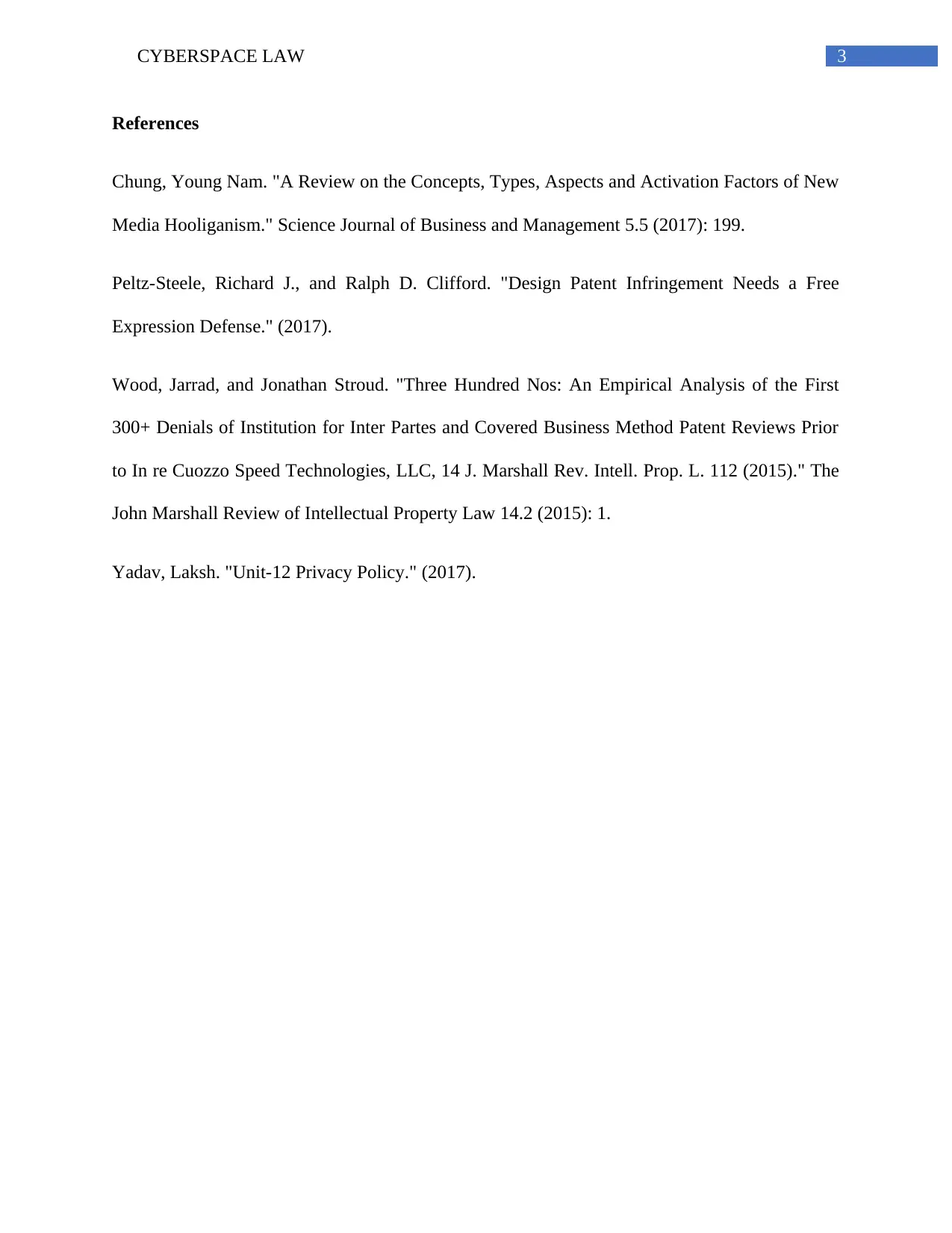Cyber Law Assignment: Copyright, Patents, Privacy, and Ethics
VerifiedAdded on 2021/06/16
|4
|617
|20
Homework Assignment
AI Summary
This assignment delves into various aspects of cyber law, examining the interplay between technology and legal frameworks. It begins by discussing the tension between technological advancements and governmental regulations, particularly concerning copyright and data protection. The assignment then explores the concept of fair use under U.S. Copyright Law, highlighting copyright infringement related to music downloads and unauthorized distribution. The analysis extends to patent law, specifically the 'one-click' technology patent, and raises ethical questions about patentability and infringement. Furthermore, the assignment addresses issues of privacy and defamation in the digital realm, focusing on the unauthorized use of individuals' names and copyrighted material. The provided solution references relevant legal concepts and scholarly sources, offering insights into the complexities of cyber law.
1 out of 4










![[object Object]](/_next/static/media/star-bottom.7253800d.svg)